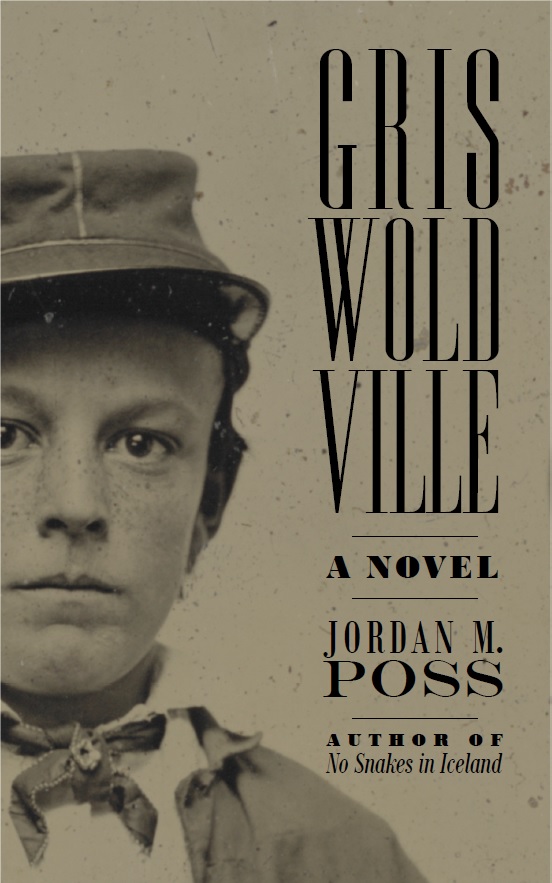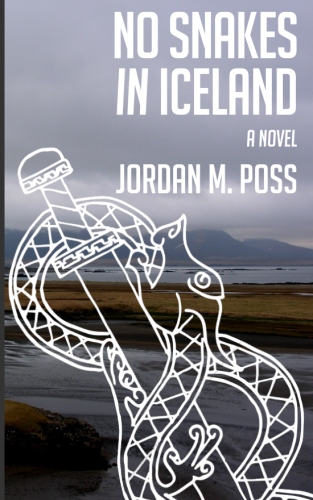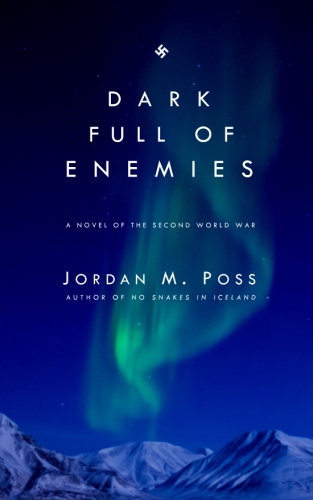A few years ago I realized that, for the most part, I don’t actually like time-travel stories. I, who spend most of my waking life thinking about what it was like in the past! I finally decided it was because a lot of time-travel stories, under the influence of various kinds of nitpicking, get so fixated on the mechanics of time travel and its resulting theoretical problems like the grandfather paradox that actually visiting the past—traveling through time—ceases to be the point.
Something similar is at work in Ruritanian fiction. Ruritania is the imaginary Central European kingdom invented by Sir Anthony Hope for his great adventure novel The Prisoner of Zenda. Hope’s story was so popular that it spawned a long-lasting subgenre of adventure fiction, the “Ruritanian romance.” Note the word romance carefully there. We’ll come back to that.
Last night I finished The Dark Frontier, Eric Ambler’s first novel, published in 1936 when he was 27. It’s at least partly a parody of British spy fiction at the time—including the work of John Buchan—and follows a mild-mannered English physicist who, having revisited some pulpy spy novels on a trip, gets into a car accident and wakes up thinking he’s a spy. He winds up involved in industrial espionage in the Eastern European republic of Ixania, a corrupt state that has just developed the first atomic weapons.
There’s a lot of interesting stuff here, but despite my love of Ambler I didn’t enjoy it very much. Even as I was reading the climactic action I was wondering why The Dark Frontier and Ixania weren’t working when Ambler’s Judgment on Deltchev and its unnamed, fictional Eastern European state did. Then I started thinking about all the Ruritanias I’ve visited over the last few years, and which ones I enjoyed and which ones I didn’t.
Here are several novels set in fictional countries that worked, and worked well (links will take you to reviews here on the blog):
The Prisoner of Zenda, by Sir Anthony Hope (1894, Ruritania)
Castle Gay, by John Buchan (1930, Evallonia)
Black Mischief, by Evelyn Waugh (1932, Azania)
Scoop, by Evelyn Waugh (1938, Ishmaelia)
Judgment on Deltchev, by Eric Ambler (1951, unnamed Eastern European country somewhere near Bulgaria)
Here are several that did not work:
And here’s an outlier, a novel that I think illustrates both the weaknesses of Ruritanias and how they’re best overcome:
I’ll stipulate here that when I talk about Ruritanias, I mean fictional countries that nevertheless are meant to exist in our world, not a fantasy world or alternate universe. Much of what I lay out below could also be helpful in thinking about fantasy worlds—though I have no time for alternate universes, much less multiverses—but that isn’t the subject here.
In mulling these stories after finishing The Dark Frontier last night, I found something in common between those that actually work. Judgment on Deltchev, the most obvious point of comparison being a later Ambler novel, is an indictment of Soviet show trials and Western acquiescence to the Stalinist takeover of Eastern Europe, all acted out through one confused, put-upon reporter’s moral struggle with the situation he’s been placed in. Ambler doesn’t even name the country in question. In a quite different vein, Black Mischief and Scoop are savage, blistering satires of modern journalism and efforts to “modernize” African nations. Castle Gay, which takes place in Scotland but concerns the upheavals of the faraway Evallonia, is straightforwardly a story of moral transformation through hardship. And the ur-text of the genre, Hope’s Prisoner of Zenda, is an adventure testing a man’s honor, loyalty, physical courage, and moral strength. In all cases, you get just enough detail about the fictional country to make it believable, but the heart of the story are the characters’ moral and ethical conflicts.
In short, the best Ruritanian stories work because Ruritania is not the point—it’s a convenient setting where real-world locations won’t distract and that allows the outworking of moral or character drama and action. Ruritania is a device. The “romance” or adventure comes first. Tellingly, all of these novels work as genre stories: Deltchev is suspenseful, Black Mischief and Scoop are unbelievably funny, Castle Gay and Zenda are fun and exciting.
When Ruritanias don’t work it’s because the nitty-gritty details take over from the characters. Following the climax of The Dark Frontier we get several pages about the events of a peasant revolution in Ixania, including which leaders took control of which government ministries and how many army officers were placed under arrest, and I realized I just didn’t care. And I didn’t care because I was not sufficiently invested in the main characters—physicist-turned-master-spy Professor Barstow and his sidekick American reporter Carey. (The first half of the novel, which is more character-driven, is much more interesting.) Likewise with Buchan’s House of the Four Winds, which has isolated episodes of thrills but mostly staggers along through over-detailed explanations of Evallonia’s tottering interwar government and the uncertain role of its populist movements. Buchan is telling a similar story of moral formation, but that gets lost in the details.
To bring the fantasy genre back in, you might recognize some of what bedevils these novels as “world-building.” This is the danger of making the world you’re building more important than the story, or of having a story too weak to support the world you invent for it to take place in.
The Courts of the Morning, the Buchan novel I suggested straddles the good-bad divide in this genre, is an instructive counterexample. As noted even at the time it was published, it occasionally bogs down in explanations of the geography, industry, and economy of Olifa, the South American republic where it takes place. But it balances this with a strong, intricate plot of great moral weight and redemptive arcs for several characters, all of whom are vividly realized. These mostly work well, and mostly counteract the overwhelming effect of industrial sabotage and train schedules.
This is by no means the last word on such a topic—the novels that don’t work have problems beyond their setting, for instance, and there are plenty of other Ruritanias I haven’t traveled to—but consider this post notes toward a fuller understanding of how best to use a fictional country in a story.







